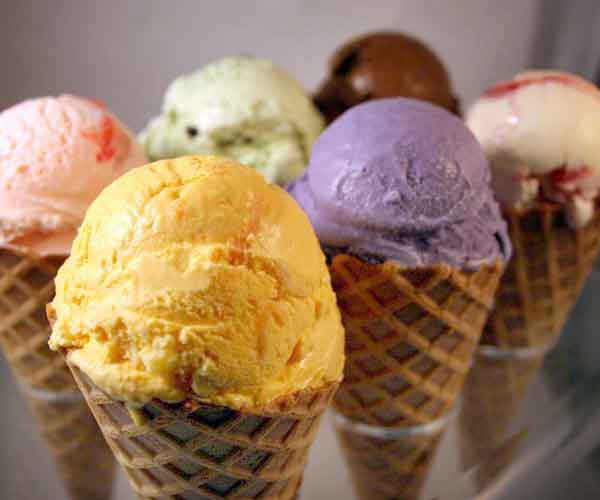 Ice cream is a type of food that is a combination of a sweetening agent, milk products, flavoring, and sometimes solid additions (like nuts, chocolate or fruit). According to the FDA, a flavored ice cream that contains solid additions should contain at least eight percent milk fat, while plain ice cream should contain at least ten percent milk fat. The first ice cream was created in the later part of the 18th century by Tortoni, a café owner based in Paris. From the first day that it was created until recently, ice cream is now available in thousands of flavors.
Ice cream is a type of food that is a combination of a sweetening agent, milk products, flavoring, and sometimes solid additions (like nuts, chocolate or fruit). According to the FDA, a flavored ice cream that contains solid additions should contain at least eight percent milk fat, while plain ice cream should contain at least ten percent milk fat. The first ice cream was created in the later part of the 18th century by Tortoni, a café owner based in Paris. From the first day that it was created until recently, ice cream is now available in thousands of flavors.
How Ice Cream is Made
Ice cream making involves a number of processes, namely mixture blending, pasteurization, homogenization, cooling, flavoring, freezing, addition of solids, packaging and bundling.
Ice Cream’s Nutritional Value
Ice cream’s nutritional value differs to that of milk. For instance, one-half cup of vanilla ice cream contains about 260 calories, 5 g of protein, 55 mg of cholesterol, 15 g of fat, and 25 g of carbohydrates. For half a cup of light vanilla ice cream, its nutritional content will be relatively lower as compared to the plain vanilla one (150 calories, 2 g protein, 35 mg cholesterol, 14 g carbohydrate and 10 g fat). Ice cream is also a good source of vitamin B12, potassium, calcium, vitamin A, pantothenic acid, riboflavin, zinc and phosphorus.
Consequences of Eating Too Much Ice Cream
One possible consequence of eating too much ice cream is the “ice cream headache.” According to research, this headache is caused when cold food, like ice cream, touches the mouth’s roof on hot days. Because of this, blood vessels dilate, triggering a headache. To prevent this from happening, it is recommended to eat only small amounts of ice cream and not eat big bites.
It is common knowledge that eating too much ice cream causes weight gain and increases the amount of cholesterol in the blood.
What to Look For When Buying Ice Cream
As much as possible when buying ice cream, choose one that is firmly frozen and does not contain any frost. If possible, buy ice cream in stores that update their ice cream stocks to ensure that you are getting the freshest available.
How to Serve Ice Cream
Ice creams are eaten as snacks or as desserts. It is often topped with chocolate sauce or caramel. There are also times when it is used as an ingredient to make milk shakes. In baking, ice cream can be placed in the oven without melting, if it is fully covered with a meringue.


Leave A Comment